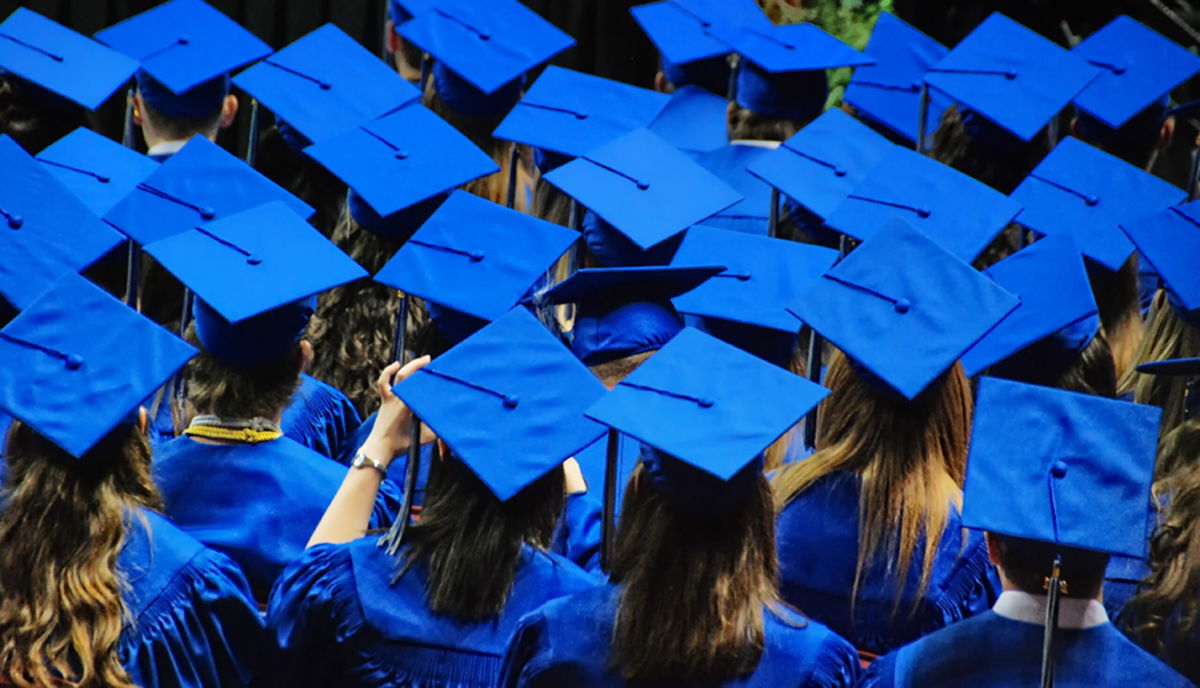Public Service Loan Forgiveness: 100,000 borrowers are eligible so far under new rules

A celebration of graduation with a sea of blue graduation caps and robes. The Department of Education said March 9 that it has so far identified 100
By Katie Lobosco, CNN
The Department of Education said Wednesday that it has so far identified 100,000 borrowers who are eligible for student debt cancellation due to the changes the agency made to the Public Service Loan Forgiveness program in October.
The cancellations for those people are expected to total about $6.2 billion in federal student debt relief. Not all of the eligible borrowers have been notified of their debt relief yet. They are being notified on a rolling basis, and the Department of Education could not provide a date when all of them will have been contacted.
The announcement marks the latest effort by the Biden administration to make it easier for some borrowers to qualify for loan forgiveness under existing programs. But the administration’s piecemeal approach still falls short of the President’s campaign pledge to support canceling $10,000 for each of the roughly 43 million people who currently hold federal student loan debt.
The Public Service Loan Forgiveness program promises to wipe away remaining federal student loan debt after an eligible public service worker makes 10 years of monthly payments. It was created about 15 years ago, but a very small percentage of people who applied had received forgiveness before 2021.
Many borrowers criticized the program as difficult to navigate and some said they found out they weren’t eligible for forgiveness only after making what they thought were a decade’s worth of qualifying payments. Only borrowers with specific kinds of federal loans and enrolled in certain repayment programs were eligible.
Last year, the Biden administration temporarily expanded eligibility through October 31, 2022, so that the program now includes borrowers who had loans that didn’t originally qualify.
“The PSLF announcement made today means more of our dedicated teachers, nurses, first responders, service members, and many other public service workers will get meaningful relief,” Education Secretary Miguel Cardona said then in a statement.
Here’s who gained eligibility
Due to the temporary waiver, it no longer matters what kind of federal student loan a borrower has or what repayment plan he or she is enrolled in. All payments will be eligible for the Public Service Loan Forgiveness program if the borrower was working full time for a qualifying employer.
Previously, eligibility also hinged on having a Direct Loan and being enrolled in an income-driven repayment plan, which sets payments based on income and family size. Those with Federal Family Education Loans, which were made by private lenders but backed by the government, did not qualify.
What borrowers can do now
Many borrowers don’t have to take any action in order to have the Department of Education review and update the number of their qualifying payments.
But those with older Federal Family Education Loans will have to consolidate them into Direct Loans if they have not already done so. Payments made before consolidation will now count toward receiving relief.
Those who already have Direct Loans but have not submitted employment certification forms for past periods of repayment must also do that now.
Borrowers have until October 31, 2022, to make those changes to qualify for forgiveness under the temporary waiver.
Student loan payments set to restart in May
Federal student loan borrowers have not had to make any monthly payments since March 2020, thanks to a pandemic-related pause on payments and interest. After several extensions of the pause, the Biden administration announced late last year that payments will resume on May 1.
But inflation has some borrowers worried about being able to restart payments — and the Russian invasion of Ukraine could drive prices even higher.
White House chief of staff Ron Klain said last week that the Biden administration is considering another extension of the pause.
“I think the President’s going to look at what we should do on student debt before the pause expires, or he’ll extend the pause,” Klain said during an interview with “Pod Save America” posted on Thursday.
Asked about Klain’s comments during Friday’s press briefing, White House press secretary Jen Psaki said: “That is obviously something we will continue to assess and review as we get closer to May.”
Biden campaigned on broadly canceling $10,000 in student debt per borrower but has so far resisted pressure to do so. Instead, the Biden administration has been making changes to forgiveness programs that already exist — like Public Service Loan Forgiveness and a relief program for borrowers defrauded by for-profit colleges — so that more people are eligible. More than $16 billion in student debt has been canceled under Biden to date.
This story has been updated with additional information.
The-CNN-Wire
™ & © 2022 Cable News Network, Inc., a WarnerMedia Company. All rights reserved.
CNN’s Sam Fossum contributed to this report.